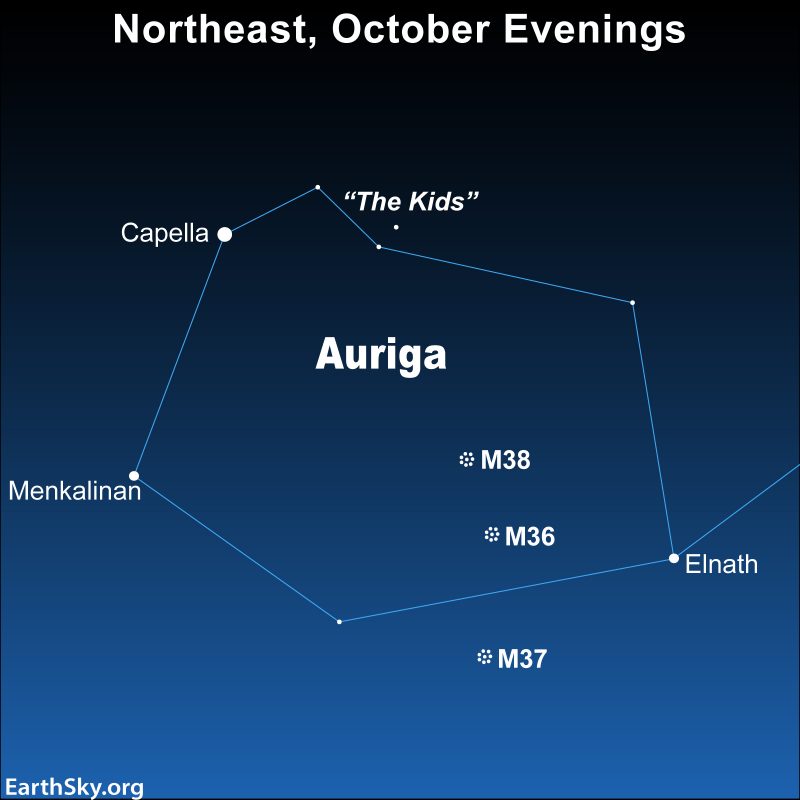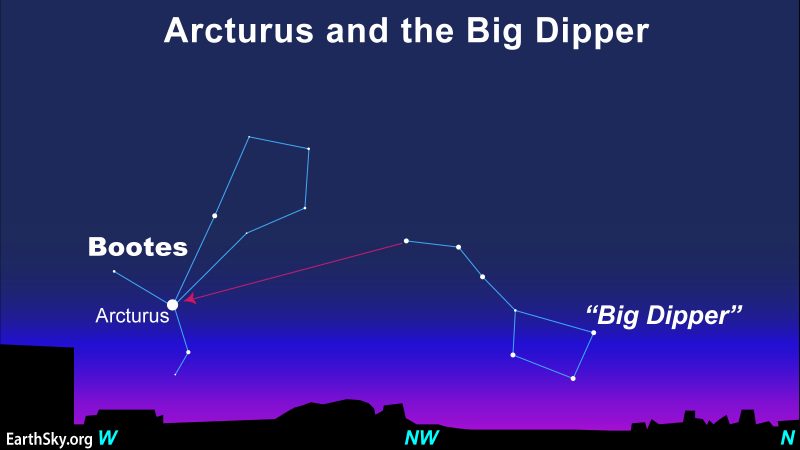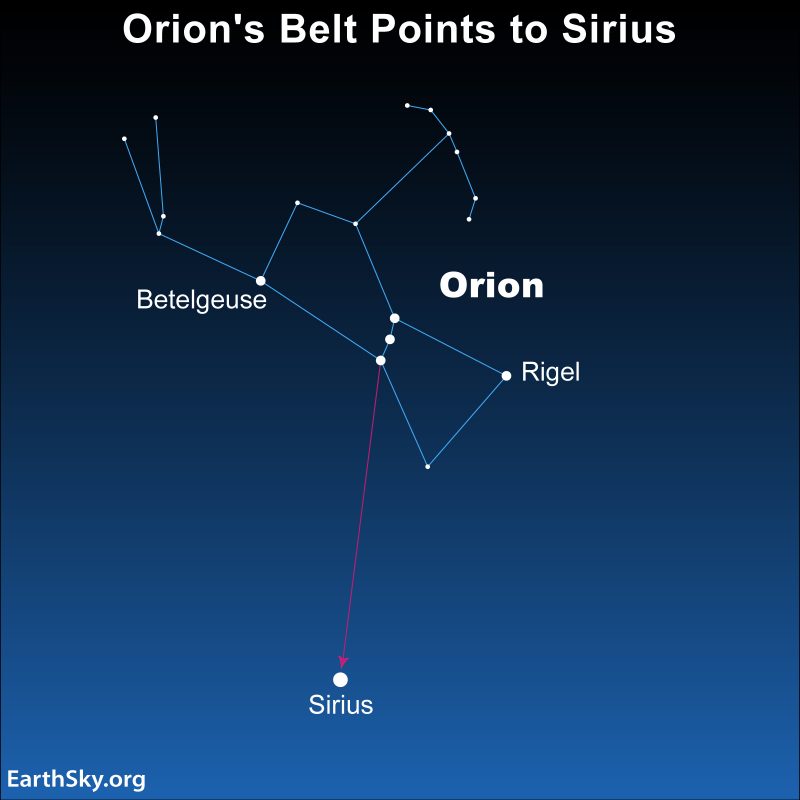
Capella is the colorful, twinkling star in the northeast
This evening, check out one of the flashiest stars in the sky. It’s so bright that every year in northern autumn, we get questions from people in the Northern Hemisphere who see a star twinkling with colorful flashes. It lies low in the northeastern sky at nightfall or early evening as seen from mid-northern locations. That star is Capella. The reason it’s so flashy is because it’s a bright star shining near the horizon, its light coming to us through our thick atmosphere. The wavering air makes its point of light jump around, split into colors and appear to flash.
If you could travel to it in space, you’d find that Capella is really two golden stars, both with roughly the same surface temperature as our local star, the sun … but both larger and brighter than our sun.
Capella is in the constellation Auriga the Charioteer. Since antiquity, Capella’s nickname has been the Goat Star. You might pick it out just by gazing northeastward from a Northern Hemisphere latitude during the evening hours in October. Capella climbs upward through the night, and this month soars high overhead in the wee hours before dawn.
Why stars twinkle or flash
So, Capella is a golden point of light that flashes red and green when it’s low in the sky. Why does it do that?
The reality is that every star in the sky undergoes the same process as Capella when it twinkles. That is, every star’s light must shine through Earth’s atmosphere before reaching our eyes. But not every star flashes as noticeably as Capella. The flashes happen because Capella is low in the sky in the evening at this time of year. And, when you look at an object low in the sky, you’re looking through more atmosphere than when the same object is overhead.
The atmosphere splits or refracts the star’s light, just as a prism splits sunlight.
So that’s where Capella’s red and green flashes are coming from – not from the star itself – but from the refraction of its light by our atmosphere. When you see Capella higher in the sky, you’ll find that these glints of color will disappear.
By the way, why are these flashes of color so noticeable with Capella? The reason is simply that it’s a bright star. It’s the sixth brightest star in Earth’s sky, not including our sun.
Here are 2 other flashing stars of autumn
If the flashy star you’re seeing doesn’t seem to be Capella (wrong time, wrong location?), here are a couple other options. Arcturus is in the northwest at this time of year. Follow the curving handle of the Big Dipper toward the horizon, and if it hits the star you’re wondering about, then you’re looking at Arcturus in Boötes.
Another option is Sirius. If you’re waking before dawn this time of year, you’ll find Sirius toward the south. Check out the maps below to see which star is twinkling at you.


Bottom line: If you’re in Earth’s Northern Hemisphere and see a bright star twinkling with red and green flashes low in the northeast on October evenings, it’s probably Capella.

